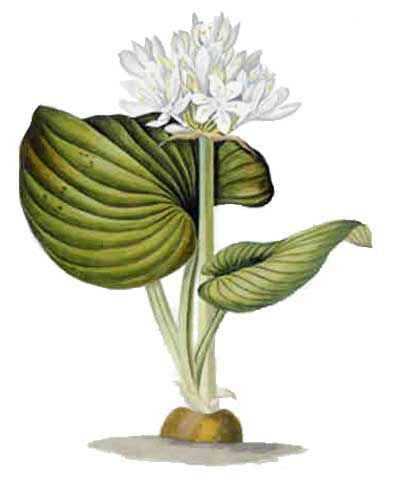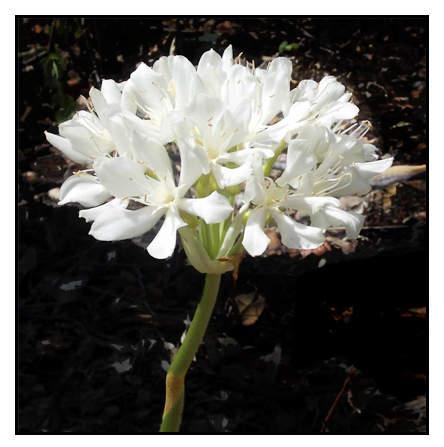
Family • Amaryllidaceae
Tambal
Proiphys amboinensis (L.) Herb.
CARDWELL LILY
| Scientific names | Common names |
| Amaryllis rotundifolia Lam. | Abod (Bis.) |
| Cearia amboinensis (L.) Dumort. | Abur (Bis.) |
| Cearia amboinensis (L.) Kuntze | Dausum (Bis.) |
| Crinum nervosum L'Hér. | Katañgal (Bis.) |
| Eurycles alata Sweet | Katungal (Tag.) |
| Eurycles amboinensis (L.) Lindl. ex Loudon | Katunggal (Tag.) |
| Eurycles autralasica (Ker Gawl.) G.Don | Kosol (Bis.) |
| Eurycles nuda Sweet | Panabor (Bis.) |
| Eurycles rotundifolia M.Roem. | Taliunud (Bik.) |
| Pancratium nervifolium Salisb. | Talaonor (Bis.) |
| Pancratium ovatifolium Stokes. | Tambal (Tag.) |
| Proiphys amboinensis (L.) Herb. | Tanual (Bis.) |
| Stemonix nervosus (L'Hér.) Raf. | Cardwell lily (Engl.) |
| Christmas lily (Engl.) | |
| Northern christmas lily (Engl.) | |
| Seashore eurycles (Engl.) | |
| Eurycles amboinensis (L.) Lindl. ex Loudon is a synonym of Proiphys amboinensis (L.) Herb. The Plant List | |
| Proiphys amboinensis (L.) Herb. is an accepted name The Plant List | |
| Other vernacular names |
| SPANISH: Hojas de potro, Cebollas del monte. |
| INDONESIA: Daun sapenoh, Bunga sepenuh. |
| MALAY: Sapenoh. |
| TONGAN: Lile pilisipeni. |
Constituents Properties |
© Godofredo U. Stuart Jr., M.D. / StuartXchange |
Updated August 2018 / December 2015
![]()
 |
| IMAGE SOURCE: Proiphys amboinensis (L.) Herb. / Adaduitokla / Creative Commons Attribution-NonCommercial-ShareAlike / Click on image to go to source page / flickr |
| OTHER IMAGE SOURCE: Pancratium Amboinense / Plate 20 / Priscilla S. Bury's Amaryllis & Lilies / Reproductions of Early 1800's Extremely Rare Botanicals. / Montecito Design |
| OTHER IMAGE SOURCE: Flower / Closeup / Cardwell Lily flower / Plate 20 / John E. Hill / 04:38, 18 February 2007 / CC BY 2.5. / click on image to go to source page / Wikipedia |
| Additional
Sources and Suggested Readings (1) Methyl Eugenol: Its Occurrence, Distribution, and Role in Nature, Especially in Relation to Insect Behavior and Pollination / Keng Hong Tan and Ritsuo Nishida / J Insect Sci. 2012; 12: 56. / doi: 10.1673/031.012.5601 (2) Proiphys amboinensis (L.) Herb / Synonyms / The Plant List (3) Methyl eugenol, a fruit-fly attractant, from the browning leaves of Proiphys amboinensis (amaryllidaceae) / C.H Chuah∗, H.S Yong∗, S.H Goh / Biochemical Systematics and Ecology, Vol 25, Issue 5, July 1997: Pp 391-393 / DOI: 10.1016/S0305-1978(97)00097-5 (4) Antibacterial profile of methanolic extracts from ten local ornamental plants against pathogenic bacteria isolated from aquaculture sites / Ho, Kit Yeng / Undergraduate Final Project Report, 2015 (5) Eurycles amboinensis / Medicinal Plants of China, Korea, and Japan: Bioresources for Tomorrow's ... / Christophe Wiart (6) INCANTATIONS AND HERBAL MEDICINES: ALUNE ETHNOMEDICINAL KNOWLEDGE IN A CONTEXT OF CHANGE / Margaret J. Florey, Xenia Y. Wolff / Journal of Ethnobiology, Summer 1998; 18(1): pp 39-67 (7) Eurycles amboinensis / Christophe Wiart / Medicinal Plants of China, Korea and Japan: Bioresources for Tomorrow's. . . (8) Medicinal Plants of the Subanens in Dumingag, Zamboanga del Sur, Philippines / Lady Jane G. Morilla, Nanette Hope N. Sumaya, Henry I. Rivero and Ma. Reina Suzette B. Madamba / International Conference on Food, Biological and Medical Sciences (FBMS-2014) Jan. 28-29, 2014 Bangkok (Thailand) |
| It is not uncommon for links on studies/sources to change. Copying and pasting the information on the search window or using the DOI (if available) will often redirect to the new link page. |
• |
 |

 Botany
Botany Distribution
Distribution Studies
Studies 